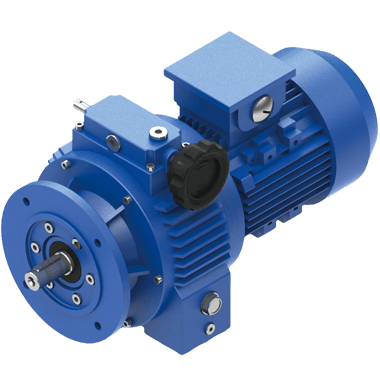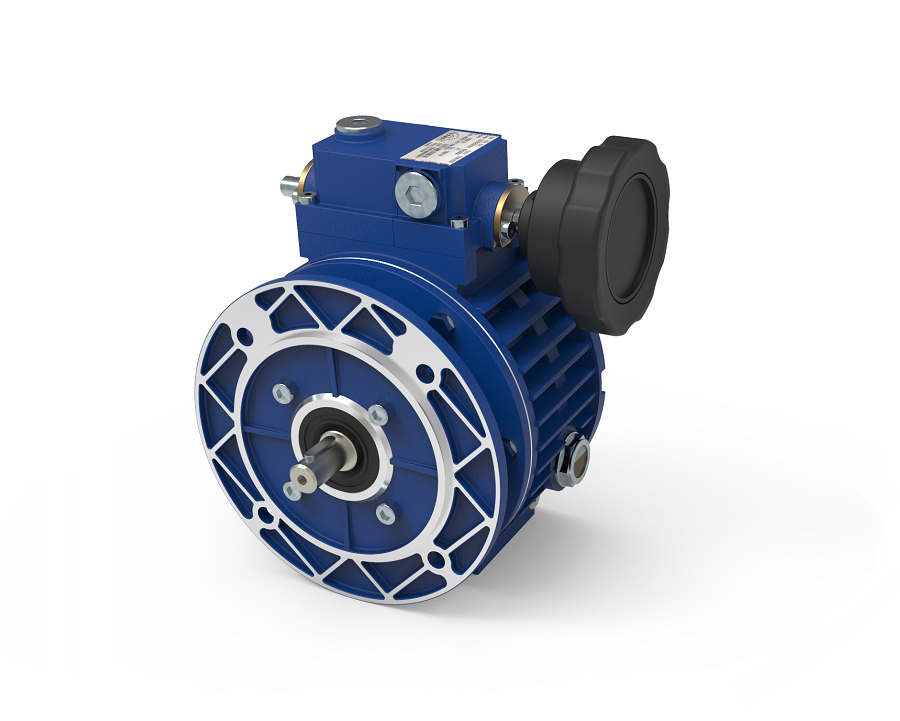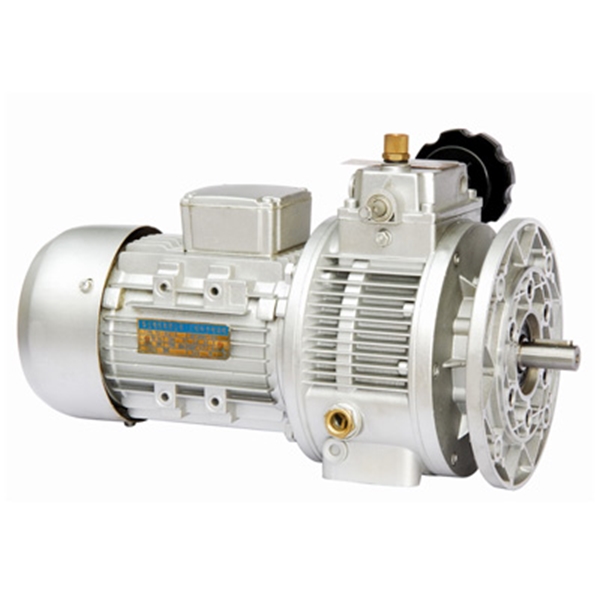Product Description
UDL Stepless Series Motor Speed Electric variable stepless speed variator
Production description:
UDL series speed variator design is compromised the international advanced technology. The main characteristics of UDL speed variator as following:
| Adjust speed precision | 0.5-1 rpm/min |
| Speed ratio | 1: 1.4 to 1: 7 |
| Features | Good strength and long life application |
| Adjust the speed Conveniently | |
| Could be running continuously, positive and negative running directly, smooth in driving, stable in performance and low in noise. | |
| Full in sealing and suitable for any environment | |
| Compact in structure and small. | |
| High-quality aluminium alloy die casting into shape, good-looking in appearance, light in weight and it never gets rusty. | |
| Good in adaptation | UDL series variator can be combined with all kinds of speed reducers, as to achieve low stepless speed-changing. |
Parameters:
| Models | Power | Ratio | Output speed(n2)* | Output torque | Output shaft dia. | Output flange dia. |
| Udl002 | 0.18kw | 1.6~8.2 | 800~170r/min | 1.5~3n. M | Φ11 | Φ140 |
| Udl005 | 0.25kw | 1.4~7 | 1000~200r/min | 2.2~6n. M | Φ14 | Φ160 |
| Udl005 | 0.37kw | 1.4~7 | 1000~200r/min | 3~6n. M | Φ14 | Φ160 |
| Udl571 | 0.55kw | 1.4~7 | 1000~200r/min | 4~8n. M | Φ19 | Φ200 |
| Udl571 | 0.75kw | 1.4~7 | 1000~200r/min | 6~12n. M | Φ19 | Φ200 |
Commeicial information:
| MOQ | 1 Piece |
| Package | Plywood Case/Wooden Case |
| Delivery | 20-25 days |
| Payment Terms | FOB, CIF, CFR |
| Payment Methods | T/T, 30% in advance, 70% before delivery |
| Shipping Port | ZheJiang |
Material:
Housing: Aluminium or ht250 cast iron.
Gear: 20crmnti h, high grade allo with carburization, surface hardness: 58-62HRC, center hardness: 33-48HRC
Grinding precision grade: ISO1328-1: 1995 class 5-6, surfaceness: 0.8, carburization depth: 0.6-1.5mm
Bearing: 42CrMo
Company profile:
Company: HangZhou CHINAMFG machinery Co., Ltd—a joint-venture company
Employmee: More than 3000, technical staff have 1/3 intotal
Business scope: P/RV/R/F/K/HB series gear units, AC motor and micro-planetary gearbox, ATA series hanging shaft-mounted gearbox
Factory square: 0.6million square meters
Market share: South America, Europe, the Middle East, southeast Asia and other countries
Our Superiority:
1. Delivery on Time.
2. Professional Service: Customized is our advantage.
3. Good Quality.
4. Fast and Low Cost Deliver: Long-term cooperated shipping forwarders.
Our Services:
| Pre-sale services | 1. Select equipment model. |
| 2.Design and manufacture products according to clients’ special requirement. | |
| 3.Train technical personal for clients | |
| Services during selling | 1.Pre-check and accept products ahead of delivery. |
| 2. Help clients to draft solving plans | |
| After-sale services | 1.Assist clients to prepare for the first construction scheme. |
| 2. Train the first-line operators. | |
| 3.Take initiative to eliminate the trouble rapidly. | |
| 4. Provide technical exchanging. |
Customer visiting:
FAQ:
1.Q:What kinds of gearbox can you produce for us?
A:Main products of our company: UDL series speed variator,RV series worm gear reducer, ATA series shaft mounted gearbox, X,B series gear reducer,
P series planetary gearbox and R, S, K, and F series helical-tooth reducer, more
than 1 hundred models and thousands of specifications
2.Q:Can you make as per custom drawing?
A: Yes, we offer customized service for customers.
3.Q:What is your terms of payment ?
A: 30% Advance payment by T/T after signing the contract.70% before delivery
4.Q:What is your MOQ?
A: 1 Set
If you have any demand for our products please feel free to contact me
| Application: | Machinery |
|---|---|
| Function: | Speed Changing, Speed Reduction |
| Layout: | Coaxial |
| Hardness: | Hardened Tooth Surface |
| Installation: | Horizontal Type |
| Step: | Stepless |
| Customization: |
Available
|
|
|---|

What factors should be considered when selecting a variator for different industrial applications?
When selecting a variator for different industrial applications, several factors need to be considered to ensure optimal performance and compatibility. Here are the key factors that should be taken into account:
1. Load Requirements:
The first factor to consider is the load requirements of the specific industrial application. Determine the torque and power demands of the machinery or equipment that the variator will be driving. It is essential to select a variator that can handle the anticipated load conditions without exceeding its maximum torque or power capabilities. Consider factors such as starting torque, peak torque, and continuous torque requirements to ensure the variator can handle the load effectively.
2. Speed Range:
Consider the required speed range for the application. Determine the minimum and maximum speeds that the variator needs to achieve. Variators are designed to operate within specific speed ranges, so it is crucial to select a model that can accommodate the required speed range while maintaining optimal performance. Additionally, consider the desired speed resolution or increments required for precise speed control.
3. Environmental Conditions:
Take into account the environmental conditions in which the variator will operate. Factors such as temperature, humidity, dust, and vibration levels can impact the performance and longevity of the variator. Choose a variator that is designed to withstand the specific environmental conditions of the industrial application. For example, some variators are specifically designed for harsh or hazardous environments and have enhanced protection against dust, moisture, or extreme temperatures.
4. Control System Integration:
Determine how the variator will integrate with the control system of the industrial application. Consider compatibility with existing control interfaces or protocols, such as analog, digital, or fieldbus systems. Ensure that the variator can be easily integrated into the control architecture of the machinery or equipment, allowing for seamless communication and control. Compatibility with programmable logic controllers (PLCs) or other control devices should also be evaluated.
5. Operational Efficiency:
Evaluate the operational efficiency of the variator. Look for features that contribute to energy efficiency, such as low power losses or regenerative capabilities. A variator that operates efficiently can help reduce energy consumption, lower operating costs, and minimize the environmental impact. Consider features like automatic energy optimization, energy monitoring, or sleep modes that can enhance the overall efficiency of the variator.
6. Maintenance and Serviceability:
Consider the ease of maintenance and serviceability of the variator. Look for features that simplify maintenance tasks, such as accessible components, user-friendly interfaces, and diagnostic capabilities. Additionally, consider the availability of spare parts and the reputation of the manufacturer or supplier in terms of customer support and after-sales service.
7. Cost and Budget:
Finally, evaluate the cost of the variator and its alignment with the budget for the industrial application. Consider the initial purchase cost as well as the long-term operational costs, including energy consumption, maintenance, and potential downtime. It is important to strike a balance between the desired features, performance, and cost-effectiveness to ensure the best value for the specific application.
By considering these factors – load requirements, speed range, environmental conditions, control system integration, operational efficiency, maintenance and serviceability, and cost – when selecting a variator for different industrial applications, you can make an informed decision that meets the specific needs of the machinery or equipment, ensuring reliable and efficient operation.

Can you explain the impact of variators on the overall drivability of vehicles?
Variators have a significant impact on the overall drivability of vehicles. Their design and functionality contribute to improved performance, smoother acceleration, enhanced fuel efficiency, and better control. Here’s a detailed explanation of the impact of variators on the overall drivability of vehicles:
1. Smooth and Continuous Power Delivery:
Variators, especially those used in continuously variable transmissions (CVTs), provide a smooth and continuous power delivery. Unlike traditional transmissions with fixed gear ratios, variators offer an infinite number of gear ratios within their operating range. This allows the engine to operate at its most efficient speed for a given driving condition, resulting in seamless and uninterrupted power delivery. The absence of gear shifts or abrupt changes in gear ratios enhances the overall driving experience, making it smoother and more comfortable for the driver and passengers.
2. Optimal Powerband Utilization:
Variators enable the engine to stay within its optimal powerband for a wide range of driving conditions. The continuously variable nature of variators allows the engine to operate at the RPM (revolutions per minute) range where it produces the highest torque and power. By keeping the engine within its optimal powerband, variators enhance the vehicle’s responsiveness and acceleration. This results in improved drivability, especially during overtaking maneuvers or when quick acceleration is required.
3. Improved Fuel Efficiency:
Variators, particularly CVTs, contribute to improved fuel efficiency. By continuously varying the gear ratio to match the driving conditions, variators allow the engine to operate at lower RPMs during cruising or light load conditions. This keeps the engine operating at its most efficient point, reducing unnecessary fuel consumption. Additionally, variators eliminate the energy losses associated with gear shifts in traditional transmissions, further improving fuel efficiency. The improved fuel efficiency provided by variators not only lowers fuel costs but also reduces the environmental impact by lowering emissions.
4. Enhanced Control and Responsiveness:
Variators offer precise control over the powertrain, resulting in enhanced vehicle control and responsiveness. The continuously variable gear ratios allow for fine adjustments in power delivery, enabling smooth and precise acceleration or deceleration. This gives drivers more control over their vehicle’s speed and performance, enhancing the overall driving experience. Variators also respond quickly to changes in throttle input, allowing for seamless transitions between different driving conditions and improving drivability in various road and traffic situations.
5. Adaptability to Driving Conditions:
Variators are adaptable to a wide range of driving conditions. They can adjust the gear ratio in real-time based on factors such as vehicle speed, throttle input, and road conditions. This adaptability allows variators to optimize power delivery for different scenarios, whether it’s smooth cruising on highways, navigating city traffic, or tackling steep inclines. By automatically adjusting the gear ratio to match the driving conditions, variators enhance drivability and ensure optimal performance across various situations.
6. Reduction in Noise and Vibrations:
Variators contribute to a quieter and more refined driving experience by reducing noise and vibrations. The continuously variable nature of variators eliminates the need for gear shifts, which are often accompanied by noticeable shifts in engine noise and vibrations in traditional transmissions. With variators, the engine can operate at lower RPMs during normal driving, resulting in reduced engine noise. Additionally, the absence of gear shifts minimizes the vibrations transmitted to the vehicle, leading to a smoother and more comfortable ride.
7. Integration with Advanced Driver Assistance Systems (ADAS):
Variators can seamlessly integrate with advanced driver assistance systems (ADAS) to enhance overall drivability and safety. By providing precise control over power delivery, variators can work in conjunction with ADAS technologies such as adaptive cruise control, lane-keeping assist, and automatic emergency braking. The integration of variators with ADAS enables smoother acceleration and deceleration, improved vehicle stability, and enhanced responsiveness to potential hazards, ultimately improving the overall drivability and safety of vehicles.
In conclusion, variators have a significant impact on the overall drivability of vehicles. They provide smooth and continuous power delivery, optimize powerband utilization, improve fuel efficiency, enhance control and responsiveness, adapt to driving conditions, reduce noise and vibrations, and integrate with advanced driver assistance systems. By incorporating variators into vehicles, manufacturers can enhance the driving experience, improve performance, and achieve higher levels of efficiency and comfort for drivers and passengers.

In what types of vehicles or machinery is a variator commonly used?
A variator is commonly used in various types of vehicles and machinery where the ability to provide variable speed or torque output is desirable. It offers advantages such as continuous gear ratio variation, stepless gear shifts, and optimized engine RPM. Here’s a detailed explanation of the types of vehicles and machinery where a variator is commonly used:
1. Automobiles:
One of the most common applications of a variator is in automobile transmissions. Continuously variable transmissions (CVTs) equipped with variators are increasingly being used in passenger cars, SUVs, and other vehicles. CVTs with variators provide smooth and seamless acceleration, improved fuel efficiency, and optimized power delivery. They are particularly beneficial in stop-and-go traffic situations and urban driving conditions.
2. Motorcycles and Scooters:
A variator is also commonly used in the transmissions of motorcycles and scooters. CVT systems with variators provide a smooth and responsive riding experience, allowing riders to easily adjust the speed and torque output. They offer advantages such as reduced gear shifting, improved acceleration, and enhanced fuel efficiency.
3. Industrial Machinery:
In industrial machinery applications, variators are used in systems that require adjustable speed or torque output. For example, variators can be found in conveyor systems, pumps, fans, and other equipment where precise control and flexibility are necessary. The ability to continuously vary the speed or torque allows for efficient operation and adaptability to different workloads.
4. Agricultural Equipment:
Agricultural machinery, such as tractors, combines, and harvesters, often use variators in their transmissions. The variators enable these machines to adjust their speed and torque output based on the specific requirements of different agricultural tasks. This flexibility allows for efficient operation in various field conditions and crop types.
5. Construction and Earthmoving Equipment:
In the construction and earthmoving industry, variators are used in machinery such as excavators, loaders, and bulldozers. These machines often require variable speed and torque to handle different tasks, such as digging, lifting, or pushing. Variators enable the equipment to adjust its output to match the specific requirements of each operation, improving productivity and control.
6. Marine Applications:
Variators are also utilized in marine applications, including boats, yachts, and ships. CVTs with variators provide smooth and efficient power delivery, allowing for precise control of the vessel’s speed. They offer benefits such as reduced vibration, improved fuel efficiency, and enhanced maneuverability.
In summary, variators are commonly used in automobiles, motorcycles, industrial machinery, agricultural equipment, construction and earthmoving machinery, and marine applications. They provide the ability to adjust speed or torque output continuously, resulting in improved performance, efficiency, and control in a wide range of vehicles and machinery.


editor by CX 2023-11-30